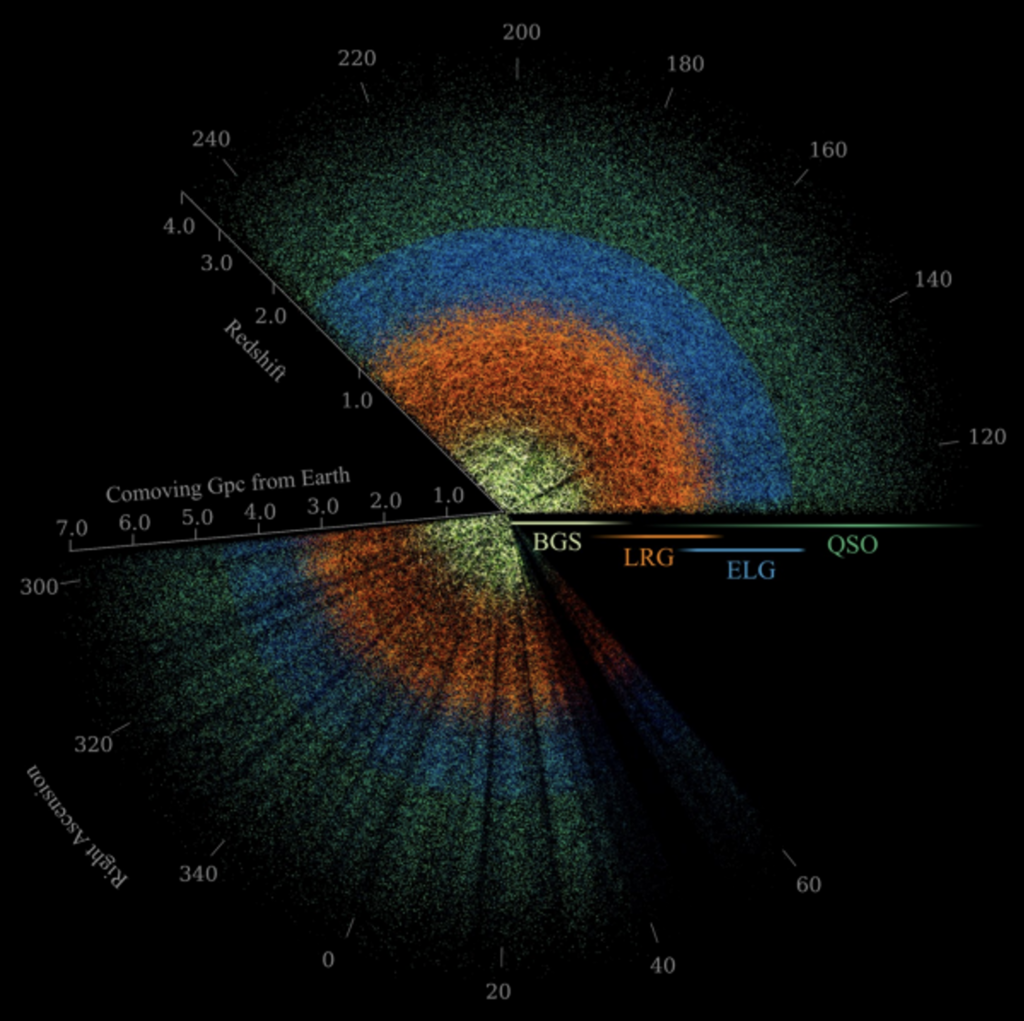https://www.cas.cn/syky/202503/t20250327_5060227.shtml
The Dark Energy Spectroscopic Survey (DESI) collaboration, jointly established by more than 70 scientific research institutions around the world, released the latest research results on dark energy to the world, and simultaneously released the spectral data of the first year of this project.
Using the data collected in the first three years, combined with other survey information, researchers found that the impact of dark energy on the expansion of the universe may weaken over time, indicating that there may be new physics beyond the current standard model of the universe. Among them, Zou Hu’s team from the National Astronomical Observatory of the Chinese Academy of Sciences participated in the scientific operation of the DESI project, contributed important value-added star catalogs in the data release, and promoted the progress of scientific discovery. Zhao Gongbo’s team from the National Astronomical Observatory led the DESI collaboration and conducted research on the dynamic properties of dark energy. The relevant research results will be released to the world in the near future.
At the same time, the DESI collaboration released the first year of observation data to the world and constructed the largest three-dimensional “map” of the universe to date. This data set contains information on nearly 18.7 million galaxies, quasars and stars. Among them, the number of extragalactic objects is more than twice the total of all previous spectral survey projects.
The cosmological redshift survey constructs the three-dimensional spatial distribution of cosmic matter by measuring the redshift of extragalactic objects, providing key data for exploring dark energy. Dark energy, as an unknown component driving the accelerated expansion of the universe, can be revealed through the density ripples left by the early sound waves of the universe, baryon acoustic oscillations. The characteristic scale (about 500 million light years) formed by baryon acoustic oscillations in the distribution of matter can be regarded as a “standard ruler”. By measuring the actual angular diameter of this scale at different redshifts, scientists can accurately calculate the historical changes in the expansion rate of the universe and then analyze the evolution of dark energy.
DESI is an international dark energy experiment jointly participated by more than 900 researchers around the world. Under ideal observation conditions, DESI can collect data from 5,000 celestial bodies every 20 minutes and capture up to more than 100,000 galaxies in a single night. This allows researchers to determine the degree to which light is “redshifted” due to the expansion of the universe, thereby mapping the universe in three dimensions and reconstructing the detailed growth history of the universe.
The DESI collaboration used the largest three-dimensional “map” of the universe to date to track the impact of dark energy over the past 11 billion years. Researchers combined DESI data, the cosmic microwave background, supernovae, and weak gravitational lensing to find that the current standard model of cosmology is difficult to explain all observations, and the model of dark energy changing over time is more consistent with these data. The “cosmological constant” dark energy may evolve over time in unexpected ways, which challenges the current standard cosmological model.
The joint constraints of DESI observations deviate from the standard cosmological model and provide evidence for the evolution of dark energy.
A slice of the cosmic map observed by DESI shows the distribution of celestial bodies within a distance range of 11 billion light-years from Earth. The slice contains four types of extragalactic celestial targets, namely bright galaxies (yellow), bright red galaxies (orange), emission-line galaxies (blue), and quasars (green).

